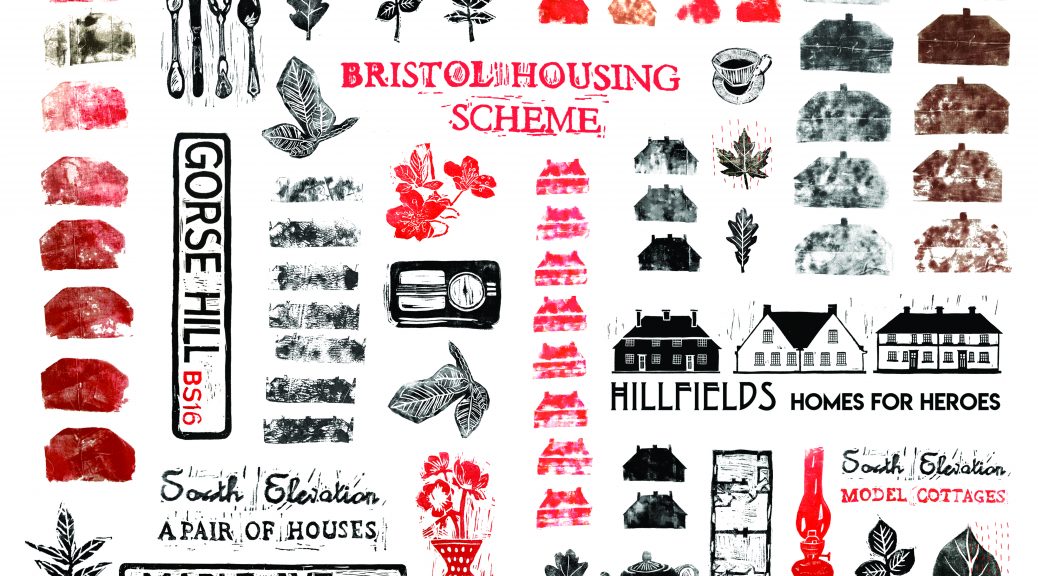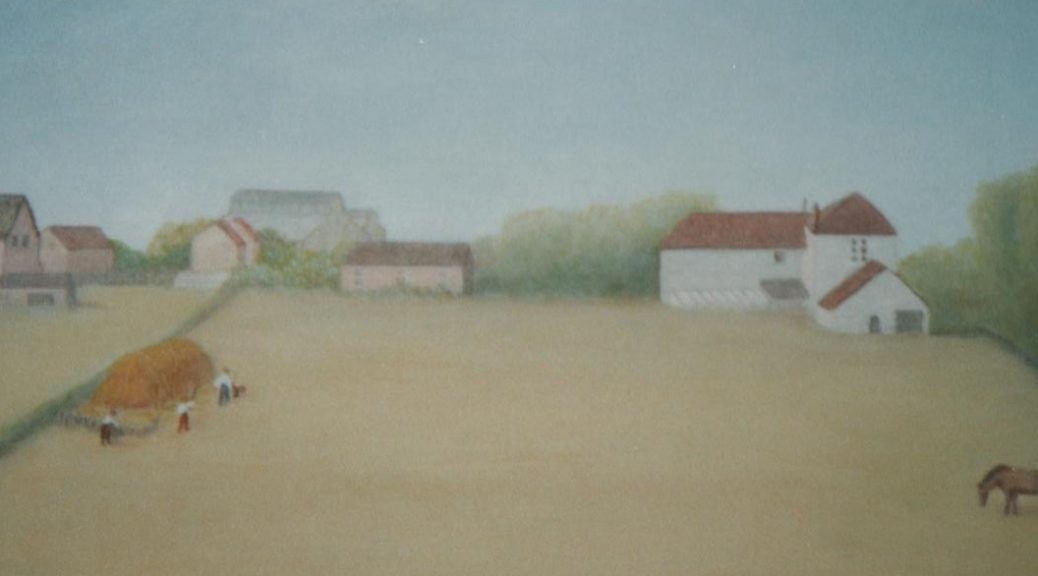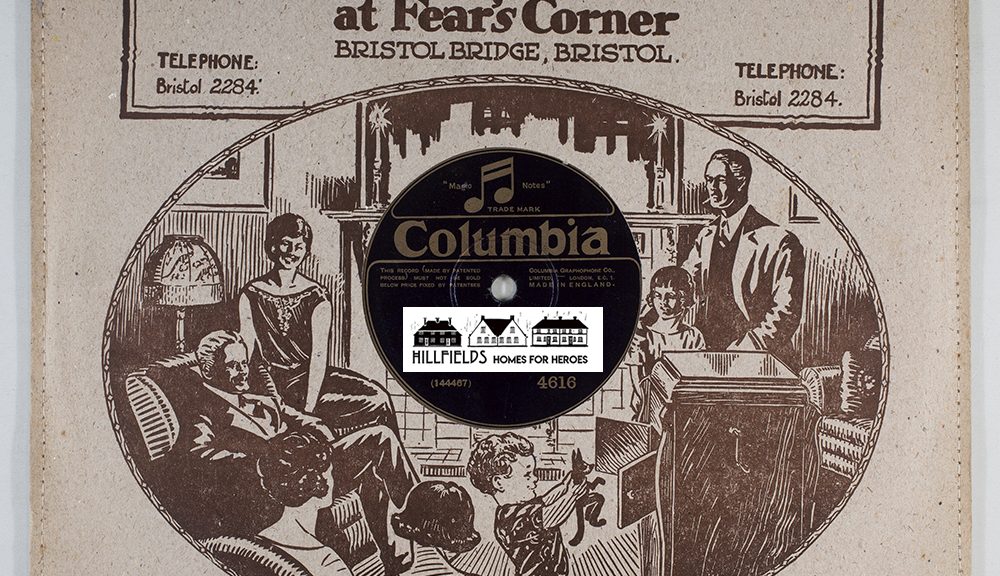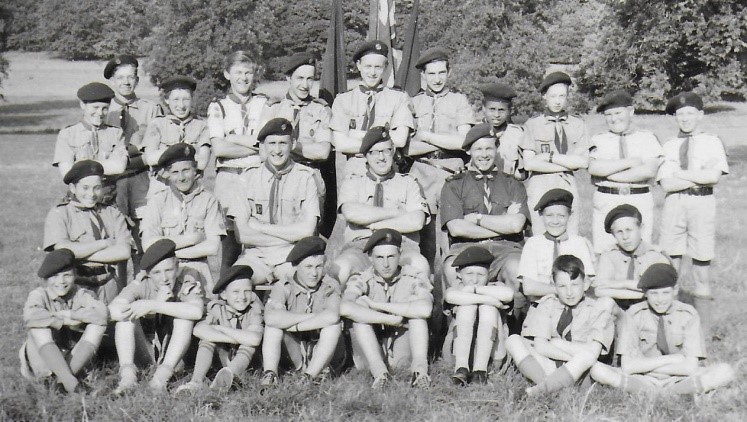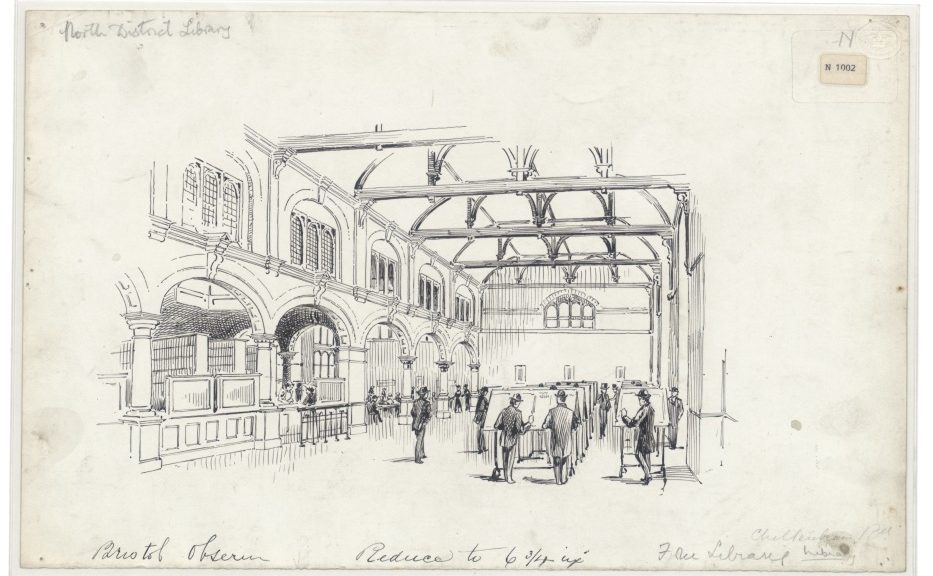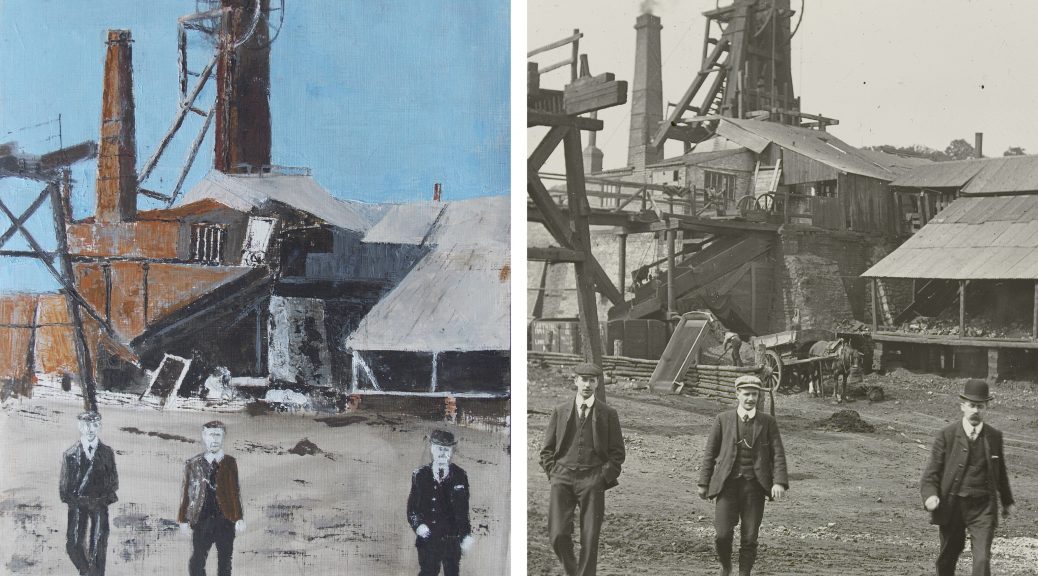Free copies of the Hillfields Homes for Heroes booklet that tells the story of this Arts Council and National Lottery Heritage Funded community project are available from Hillfields Library.
All posts by admin
The Chicken Stealer’s Nativity, a Legend of Southmead
Why is there a crowd outside of Aldi?
Who stole the chicken?
Is that a police helicopter above Vera’s pub?
Meadows to Meaders cast members from Southmead’s very own community soap opera have been working with Bristol Old Vic as part of a special Christmas Show for 2020 called Angels in Bristol.
“Tom Morris and Vanessa Kisuule (Bristol City Poet 2018–20) have united with schools and communities across Bristol and the region to create a truly Bristolian version of The Greatest Story Ever Told. This is the Nativity, but not as you know it, retold as a story of miraculous hope in a city aching for change.”
The Meadows to Meaders cast have helped with the 6th episode of Angels in Bristol, Miracle 6: The Chicken Stealer’s Nativity, a Legend of Southmead, that will be available on Christmas day.
Further information about this free show and how to receive each episode is available on the Old Vic web pages.
Hillfields Winter Trail 2020
We are delighted to be working with UWE Masters Architecture students again to create a Hillfields Winter Trail in the run up to the festive season. The area will be decorated with the help of local residents and Minerva Primary School in the style of Christmases past.
We will be building on stories and themes emerging from conversations with people who have lived and grown up in Hillfields to celebrate Bristol’s very first council estate’s 100th Christmas.
The winter trail has its own website that includes videos and registration details.
Additional information is available here.
A Hillfields History
By Pauline Harvey
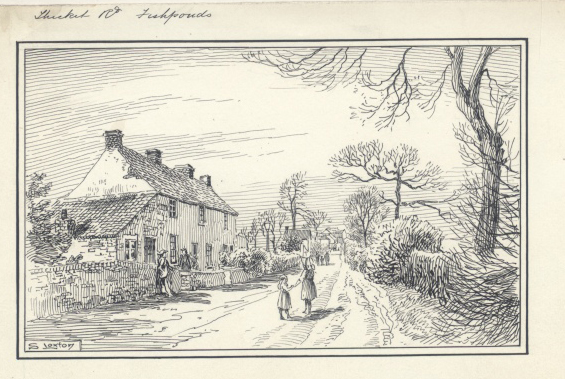
This area, on which the Hillfields council estate was built was once part of the ancient forest of Kingswood, which provided game for the Saxon kings of England, and later, the Plantagenets. Kingswood Forest was the scene for the assassination of a Saxon King, Edmund, in 940. It’s said by some historians that Edmund met his end in a palace at Pucklechurch, others say it is more likely he was murdered in one of the hunting lodges in the vicinity.
From the late twelfth century, when King Richard was away from the country crusading, his brother John was virtual King, using Bristol Castle as a base to rule. During this time, perhaps after he became King officially, John built his lodge on an elevated point just above, and bordering on the present Hillfields Estate, within the King’s Woodland. It was near the current site of Cossham Hospital. Over time there were other lodges, but King John’s would have commanded the best view of the forest.
In 1227, Henry III, son of King John, deforested most of the area and kept Kingswood Chase – a small part of it. This was a district of ‘wood, scrub and wasteland’, the jurisdiction of which seems to have been subsequently in dispute for centuries. Elizabeth I further confused claims to ownership by granting the Manor of Barton – on which the Hillfields estate now lies – ‘away from the Crown’ without mentioning the parts of the Chase that lay within its bounds. The word ‘forest’ was apparently a legal term at the end of the sixteenth century, which perhaps explains some of the confusion from Elizabethan times onwards. By 1566, ‘’all manner of fewell’’ here was ‘’good and cheap’’, and in 1620, coal, extensively mined in the surrounding area, was in general use. Throughout the medieval period the forest was subject to clearance, and settlements were formed where the trees had grown. (Quotes from Brown, 1994)
An old map of Kingswood (1610), reproduced in 1839, and in 2014 on a website by Paul Johnson, shows the Hillfields area covered by woodland, lying within a small triangle between ‘Gosthill’s Gully’ (the Gossy) below Speedwell Playing Field and Whitefield Road – and Mangotsfield Ways. This ancient track roughly followed the present Ridgeway Road, which must have once continued along Goodneston Road and perhaps beyond to Staple Hill and Mangotsfield, before the railway was built, which now borders the estate below Marshfield Road. On the East side of the triangle was more wood – stretching roughly along what is now the west side of the Ring Road, from Warmley to Mangotsfield. This area was divided by a track running from Conham Hill to Staple Hill, roughly corresponding to Hanham Road, Spring Hill and Sweets Road. Lodge Causeway, which borders Hillfields on the southern west side is also represented on the map as a track.

Gradually this area was carved up, so that at the the beginning of the 17th century, the Berkeleys, Newtons, Players and Chesters were enjoying the Lord’s right to wood and coal, and in 1670 the Chase was divided into four main Liberties. This meant the land was claimed without authority. Crown control of the forest area was disputed by the landowners, who fought for their claims. By the eighteenth century the Chase, in which the present estate lies, consisted of 3,400 acres. Sometimes it was called a ‘Chase’; at others, a ‘forest’ – so that the royal presence and ownership became unclear. By the end of the seventeenth century almost all the deer were gone. However, the woods continued to provide cover for poaching into the eighteenth century and probably beyond. The Lodge eventually became home to the Duke of Beaufort’s steward, who watched over the coalmines below in what is now the Woodland Way area. Occasionally, deer can still be seen as you leave the built-up area of Kingswood on the Bath and Marshfield Roads.
Over the years the land was enclosed, as can be seen on a 1780 enclosure map. The hedge on the Forest Avenue side of Hillfields Recreation Ground is, I believe, one of these original enclosure hedges, blossoming with May now, at the time of writing. There remain other old hawthorn hedges around the estate, at the backs of houses.
In 1779, the enclosure act ended all common rights to much of the land. The Dukes of Beaufort, themselves descended from the same King John who had the hunting lodge built, sold the land on which it stood to Handel Cosham, a colliery owner, in 1875. The old lodge was completely decayed by 1615, and was rebuilt or extended several times before Cosham presumably tore it down to build his hospital close by. There is a photo on flickr.com, with an internet article by Paul Townsend on King John’s Lodge, of the last remaining structure, in 1905. It is turreted, and half covered in creeper. Apparently a centuries old tree was cut down in the hospital grounds, and a fragment of the old lodge could still be seen within living memory – possibly there are still remains in private gardens nearby.
Hillfields was part of one of the last remaining large expanses of the Chase. A map by B. Donne, printed on the cover of Avon Past7 names the area as part of Lodge Heath – without roads or buildings, in 1769, although the earlier 1610 map shows another lodge just north of the present Woodland Way, where a path still runs from Cosham Hospital. There were another two lodges in the seventeenth century, according to Peter Brown – ‘one decayed and one a Berkeley alehouse’. The Earls of Berkeley also owned much of the adjoining land. Thicket Avenue, named after a thicket near where the Baptist Church now stands was apparently first formed by the Enclosure Commissioners in 1780, and was an isolated, lonely track. It was also known as Thicket Lane and there was a dewpond there.

In Soundwell a spring rose and joined another – this watercourse can still be seen at the back of Beechen Drive houses. Although at their higher end the streams have been covered, they still appear to flow in very wet weather, when part of the field becomes marshy, and water emerges from pipes below the Recreation Ground. Pools and a stream overflow the ditch at the lower end, from where it continues down garden paths into the drains. There are always frogs around this area. Once, according to old people interviewed by Hillfields historian Jane Baker in the early 1990s, the water was deep, clear and clean.
In the nineteenth century, Hillfields still sounds like a pleasant, rural environment, where the corncrake lived in the wildflower fields. The very old people – some in their nineties – in Jane Baker’s books could remember the remains of this. There were fields, orchards and market gardens in Marshfield Road, Bill Lypiatt recalled. Stanley Nicholls spoke of old trees behind Thicket Avenue, and blackthorn blossom – the remainder of which can still be seen behind the Baptist Church, in the Recreation Ground. Sometime before 1910, suffragettes burnt a haystack in Grindles Fields – part of Briar Way. Clear well water was still drawn in war-time from Acacia Road. Some oaks from the old forest remained, left in people’s gardens when the estate was built – possible descendants of these can be glimpsed at the backs of houses on the south eastern side of the estate. At Hillfields School, there is a 70-year-old oak, especially planted. I found a sapling growing naturally outside our front hedge, so saved it from the Council grass cutters and it now grows in our back garden. In the front gardens, wildflowers still grow on some lawns laid with turf from the original fields, and in many gardens around the estate grow apple trees, which I believe were first taken from the old orchards. According to a neighbour, some of these trees still grew in the latter half of the last century, by a lane which runs from Forest Avenue along the back of Beechen Drive, where an oak tree still grows today.


So although Hillfields may seem to some – as it did to me when we first moved here more than 20 years ago – a rather uninteresting place, it has layers of history. As recently as 1987 coal seams and shafts were revealed at the bottom of Beechen Drive, Briar Way and Hillfields Avenue, and old wells still exist. The displaced Belgians who first occupied the newly built houses of Beechen Drive after the ‘Great War’ in 1919 were forerunners to the different nationalities who occupy many of the houses on the estate today.
Acknowledgements:
Baker, J., (1989), ‘Hillfields The First Sixty Years A Local History Study’, Copies in Hillfields Library and in Bristol Archives, B Bond Warehouse, Smeaton Road, Bristol
Baker, J., (1993), ‘Nature Notes’, Hillfields Library
Baker, J., (2003), for Bristol and Avon Family History Society, Journal 114, [online], Available at: bafhs.org.uk/bafhs-parishes/other-bafhs-parishes/73-fishponds
Bartlett, J., Penny, J., (2001), Fishponds, its Boundaries, Churches and Chapels, Bristol, Fishponds Local History Society
Braine, A., (1969), ‘The History of Kingswood Forest’ In Staple Hill Library
Brown, P., (1994), ‘The Bristol and South Gloucestershire Coalfields’, in Staple Hill Library
‘Fishponds Stapleton and Frenchay’ [online], Available at: fishpondsbristol.wordpress.com/local-interest
Hattaway, M., (2009), (ed.), ‘Introduction’, As You Like It, U.K., Cambridge University Press, p.2
Johnson, P., (2017), ‘Introduction’, ‘Bristol Past’; Penny, J., ‘Fishponds and its History’, FLHS members [online], Available at: fishponds.org.uk/index.html
La Trobe – Bateman, E., (1997),‘Kingswood and Mangotsfield’, Avon Extensive Urban Survey Archaeological Assessment Report, [online], Available at: southglos.gov.uk/documents/pte070179.pdf
Lindegard, D.P., Grudgings, S., (2016), Killed In A Coalpit Lives of the Kingswood Colliers, Basingstoke, South Gloucestershire Mines Research Group
Moore, J.S., (1982 – 3), (ed.) Russell, J., Malcolmson, R.W., Avon Past 7,Bristol, Avon Archaeological Council and Avon Local History Association
Samuel, J., (2000), ‘Watching Brief Excavations At Moat Farm, Pucklechurch, South Gloucestershire, in Bristol & Avon Archaeology, Great Britain, Authors and Bristol and Avon Archaeological Society, pp. 12 – 13
Townsend, P., (2007), ‘Lodge Hill, Kingswood, South Gloucestershire’ [online], Available at: www.flickr.com>photos>brizzlebornand bred
Records of Hillfields
We asked the Hilfields Homes for Heroes project participants to tell us about their earliest musical memories.
Their stories cover; family favourites, jazz at the Old Duke, musicals at the Hippodrome, rock n roll records and local band Johnny Carr & The Cadillacs.
Click the link below to view the story map that has been created from these memories that were collected during regular Zoom sessions, emails and phone calls.
139TH BRISTOL (HILLFIELDS PARK) SCOUT GROUP
By David Hutton
Scouting started when Lord Baden Powell (BP) published a book called Scouting for Boys in 1907 and held a trial camp on Brownsea Island. Boys loved what they read and started to form themselves into Patrols to carry out the activities written about. BP soon realised that it was necessary to set up an organisation to regulate things and to bring in adult leaders and the rest is history. Girls also wanted to join and at a Boy Scout Rally at Crystal Palace in 1909 a group of girls asked to join and so BP asked his sister Agnes to form the Girl Guides in 1910.
The 139th Bristol Scout Group opened in 1927 and would have had a Wolf Cub Pack for boys aged 8 to 11 and a Boy Scout Troop for boys aged 11 to 18 years, but we are not sure where they met. By 1935 they were meeting in Charlton Road and by 1937/38 the HQ was in Woodland Way.
After the Second World War the Cubs and Scouts were meeting at Hillfields Park Junior School and by 1953 they had a Senior Scout section. This was to split up the large age difference in the Scout Troop, Scouts were now aged 11 to 15 and Senior Scouts were 15 to 18. At 18 boys moved on to Rover Scouts.
Following a lot of hard work by the Parent Committee, the new Headquarters was opened in 1953 located in Beechen Drive between numbers 71 and 73. The official opening was carried out by the County Commissioner. I joined the Hillfields Cubs around 1948/49 but didn’t enjoy it and soon left. In 1952 I joined the 55th Bristol Scout Troop associated with St Mary’s Church in Fishponds. This I loved and progressed through Scouts, Senior Scouts and then Rover Scouts. My first camp was near Frome and we had to let Skip have our ration book coupons so that he could buy our food for the week. In 1957 I attended the World Scout Jamboree held at Sutton Coldfield to celebrate 50 years of Scouting. In 1961, Chris Claridge became the Scout Leader at the 139th and he worked for Mardon Son & Hall, the printing arm of Imperial Tobacco as did my father, Frank Hutton. Chris was looking for an Assistant Senior Scout Leader to look after the older boys and so I joined the team in December 1961.
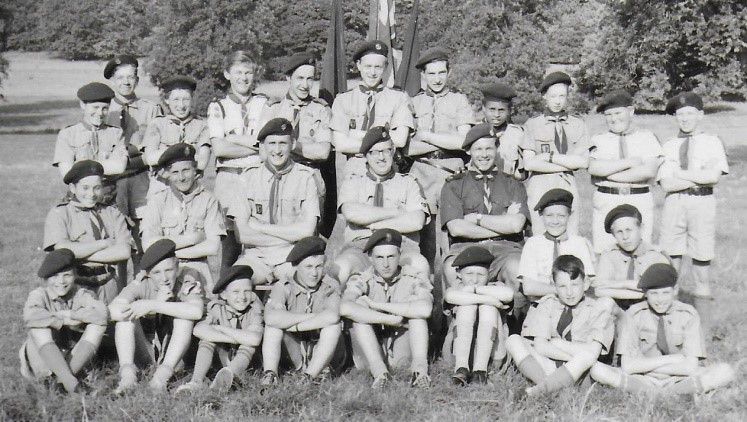
There were only six or eight boys of Senior Scout age so it was not always easy to organise programmes, particularly if some boys were away. Rod Parfitt, a friend of mine from the 55th was doing a similar job with Senior Scouts at a Troop in Staple Hill and had the same problem. To overcome this we organised joint activities, some quite adventurous. On one occasion we organised a night hike starting in the Cheddar area that ended up with us all sleeping on the top of Crook Peak near Loxton in January, Brrr!
At the same time, Pat Thomas, my wife to be, was a Brownie Leader at the Hillfields Park Brownie Pack who met at the Baptist Church. She had been a Ranger Guide with the 33rd Guides based at St Mary’s Church in Fishponds. I retired from the Troop about 1965 because we were getting married and moving to Little Stoke. Pat continued as a Brownie Leader until our son was a year old in 1969 by which time it was difficult to travel over from Little Stoke and our daughter was on the way. When our children were old enough to join Cubs and Brownies we both got back into Scouting and Guiding in the Little Stoke local area and are still involved.
The 139th Group closed in 1993 and was taken over by the 66th Bristol based at St John’s Church in Lodge Causeway. The HQ has been demolished and a pair of semi- detached houses has been built on the site.
Acknowledgement – Richard Ivens, Scout County Archivist for historical data.
Library Memories
Before Lockdown, the cast from Southmead’s community soap opera, Meadows to Meaders (that is written and performed by local residents) were working with theatre designer, Katie Sykes in Southmead Library to create props and costumes for our third episode, Love on the Mead which has been postponed to a time that is safe for all participants and audience members.

Virtual rehearsals are continuing on an online platform during Lockdown and were joined for one session by Paul Walker from Bristol Libraries to feature in the library podcast series, Shelf Life. https://soundcloud.com/user-248096612/shelf-life-4-meaders-wouldnt-say-it-like-that-local-learning-in-southmead
The stories that inform the Meadows to Meaders script are based on true events and the cast have been remembering their early library experiences, some from a time before Southmead Library was built.
Click the link below to view the story map that has been created from these memories that were collected during weekly Zoom sessions and emails.
Library Memories story map
Records of Southmead
We asked the cast of the Southmead community soap opera, Meadows to Meaders to tell us about the first piece of music that they could call their own.
Their stories cover vinyl bought in the 1950s to Spotify today, Mendelssohn to Eminem and goes from Broadmead to Porto and back to Southmead.
Click the link below to view the story map that has been created from these memories that were collected during weekly Zoom sessions and emails.
Records of Southmead story map
1970s Southmead
The cast of Meadows to Meaders 3 have been sharing their stories about 1970s Southmead,
Bedminster
Victorian resources (these were created for St Michael-on-the-Mount Primary School, but contain generic content that can be applied elsewhere).
Bedminster is likely to have Saxon origins that pre-date that of Bristol. The Bedminster we see today was shaped by Victorian industries like coal mining, tanning and tobacco and the associated streets of shops and terraced housing.
As part of the Ashton Gatehouse project we worked with Ashton Gate Primary School to explore the history of the 1914 International Exhibition (known as the White City) that was located on Ashton Fields to the west of Bedminster. With the outbreak of war the ‘temporary’ buildings of timber and plaster were used to house and train new recruits for the Gloucestershire Regiment. With assistance from local historian and author of Bristol’s Lost City, Clive Burlton, Year 5 pupils from Ashton Gate Primary School visited the Bristol Record Office to research the White City. Working with UWE film undergraduates and digital media expert, Dan Tagg they recreated the 1914 exhibition in Minecraft.

Ashton Vale Primary School were also involved in the Ashton Gatehouse learning activities, exploring their local industrial heritage with their parents and grandparents. Year 6 used the Our Place approach to assess the route from Ashton Vale to Ashton Gatehouse, addressing issues around signage with architect, Richard Guise. Year 5 collected photographs, letters, artefacts and memories associated with the area from local residents that have helped to enhance the Know Your Place community layer for Ashton Vale.
